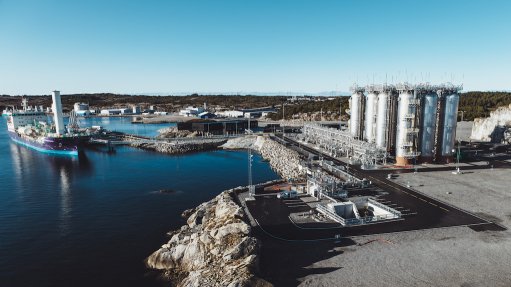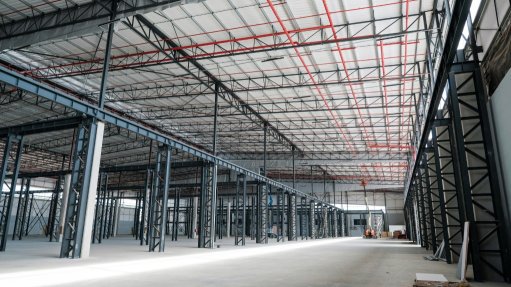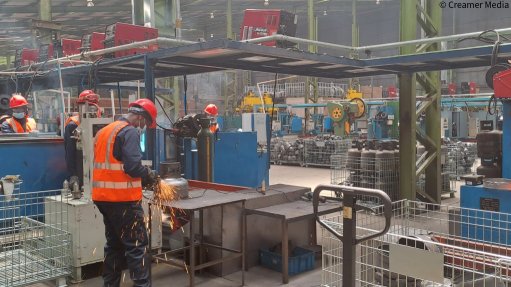A simple framework to measure the impact and success of infrastructure projects
This article has been supplied.
By Mr. Olebogeng Manhe, Chairman of Gap Infrastructure Corporation
Infrastructure projects provide essential services and other benefits to people from all walks of life, and play an integral role in the welfare and economic stability of a nation. However, it’s often difficult for developers and clients to measure how impactful and successful a project will be once completed.
“While every precaution is taken in the planning and construction phases to ensure the structure’s long-term durability and utility, the only true measure of a project’s capabilities is how people use it every day,” explains Olebogeng Manhe, Chairman of the Gap Infrastructure Corporation.
“There is value in understanding a project’s impact and success once completed. Post-analyses help determine whether what we deliver is of value and meets the needs of the client, and especially the communities we serve. It further identifies potential future issues that the system may experience, what the long-term maintenance requirements will be, what additions need to be made, and how developers can improve upon their processes in future projects.”
Post-project analyses are systematic and comprehensive assessments of the project’s performance, outcomes, and impact after its completion. These assessments can be conducted at different levels and stages, depending on scope and evaluation.
For example, some analyses may focus on the technical aspects of the project, such as the design, construction, operation, and maintenance of the infrastructure. Others may focus on the economic, social, environmental, or institutional aspects of the project, such as the cost-benefit ratio, stakeholder satisfaction, environmental impact, or governance and accountability.
Measuring impact and success
There is no one-size-fits-all method for measuring the impact and success of infrastructure projects. Different projects may have different objectives, characteristics, contexts, and challenges that require different approaches and indicators. However, some general steps and principles can guide the process of developing and applying appropriate methods for measuring impact and success.
First, it is important to define clear and relevant measures of success that reflect the project’s objectives and value. These measurements should be aligned with the expectations and interests of the stakeholders involved. For example, a public sector client may be more concerned with the social and environmental benefits of an infrastructure project than a private sector contractor who is more focused on financial returns.
Second, it is essential to collect reliable and valid data to support the measurement of success. This may involve using various sources and methods of data collection, such as surveys, interviews, observations, records, or sensors. Some data may be quantitative, such as numbers or statistics. Others may be qualitative, such as opinions or stories. The data collection should be planned and conducted in a systematic and ethical manner.
Third, data must be analysed and interpreted to draw meaningful conclusions and recommendations. This may involve using various tools and techniques of data analysis, such as descriptive statistics, inferential statistics, regression analyses, or content analyses. The analysis should be rigorous and transparent, with clear assumptions, limitations, and declaration of uncertainties.
There are a few methods that can help both infrastructure developers and their clients measure the impact and success of a project.
A fault-tree analysis is a graphical technique that identifies and analyses possible causes that may lead to an undesired event once the infrastructure is in use. The method uses logic symbols and rules to represent the relationships between events, and to calculate their probabilities. A fault-tree analysis can be drawn up directly after a project’s completion, using simulated data to determine what future issues may come to pass.
Georeferenced data, in combination with demand peak indicators, reflect the highest level of demand for or usage of a completed project, using real-time geographic location data. This analysis can be used to, for example, monitor peak traffic periods and high traffic loads to estimate how well a road or bridge will function under certain circumstances, what future maintenance requirements will be, and when said road or bridge will need large-scale reparations or replacement.
Similar to demand peak indicators, a demand forecast analysis can be used to estimate future demand for an infrastructure project based on various factors such as population growth, local income level changes, user behaviour, and other trends that would affect how people will use the infrastructure.
Finally, an accessibility analysis measures how accessible infrastructure is, whether the service is easily or conveniently reachable or available to users, whether there are any gaps or disparities in access coverage, and whether there are opportunities or challenges to be improved upon.
“By using some of these methods to measure the success of our projects, project developers can improve the quality and functionality of future projects, enhance decision-making processes, optimise resource allocation, and increase client and user satisfaction. Through being more aware of our successes and failures, we’re able to improve and implement enhanced techniques with every new project, ensuring that South Africa’s infrastructure continues to improve over time,” says Manhe.
Article Enquiry
Email Article
Save Article
To advertise email advertising@creamermedia.co.za or click here
Comments
Press Office
Announcements
What's On
Subscribe to improve your user experience...
Option 1 (equivalent of R125 a month):
Receive a weekly copy of Creamer Media's Engineering News & Mining Weekly magazine
(print copy for those in South Africa and e-magazine for those outside of South Africa)
Receive daily email newsletters
Access to full search results
Access archive of magazine back copies
Access to Projects in Progress
Access to ONE Research Report of your choice in PDF format
Option 2 (equivalent of R375 a month):
All benefits from Option 1
PLUS
Access to Creamer Media's Research Channel Africa for ALL Research Reports, in PDF format, on various industrial and mining sectors
including Electricity; Water; Energy Transition; Hydrogen; Roads, Rail and Ports; Coal; Gold; Platinum; Battery Metals; etc.
Already a subscriber?
Forgotten your password?
Receive weekly copy of Creamer Media's Engineering News & Mining Weekly magazine (print copy for those in South Africa and e-magazine for those outside of South Africa)
➕
Recieve daily email newsletters
➕
Access to full search results
➕
Access archive of magazine back copies
➕
Access to Projects in Progress
➕
Access to ONE Research Report of your choice in PDF format
RESEARCH CHANNEL AFRICA
R4500 (equivalent of R375 a month)
SUBSCRIBEAll benefits from Option 1
➕
Access to Creamer Media's Research Channel Africa for ALL Research Reports on various industrial and mining sectors, in PDF format, including on:
Electricity
➕
Water
➕
Energy Transition
➕
Hydrogen
➕
Roads, Rail and Ports
➕
Coal
➕
Gold
➕
Platinum
➕
Battery Metals
➕
etc.
Receive all benefits from Option 1 or Option 2 delivered to numerous people at your company
➕
Multiple User names and Passwords for simultaneous log-ins
➕
Intranet integration access to all in your organisation





















